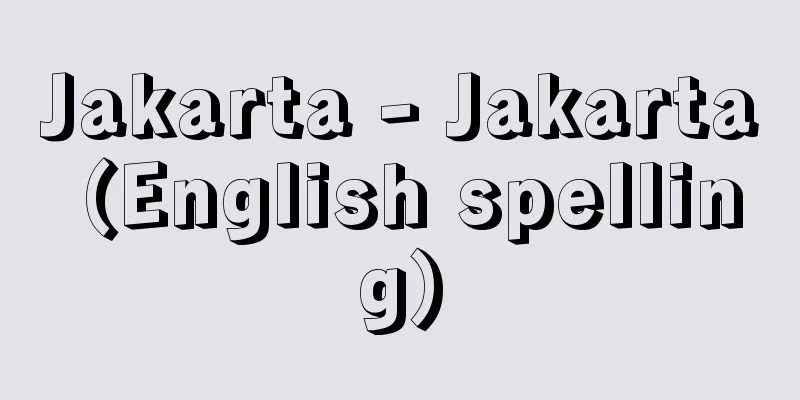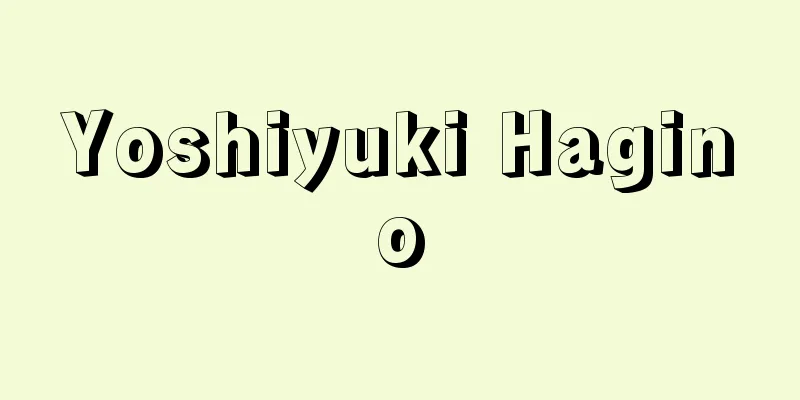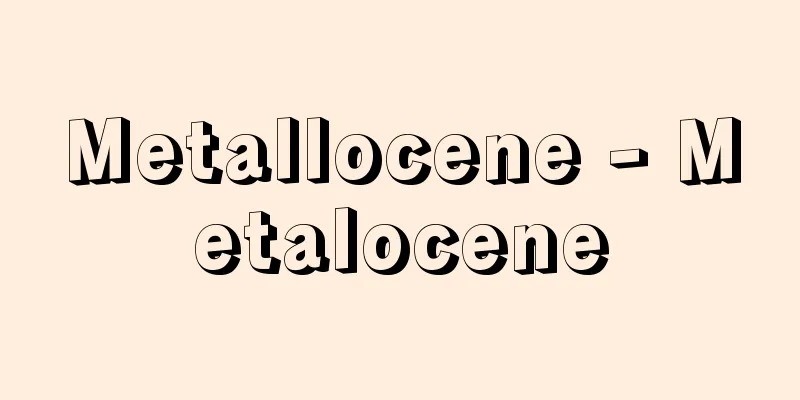Jakarta - Jakarta (English spelling)

|
The capital of Indonesia. It is located at the mouth of the Ciliwung River on the northwest coast of Java. Its former name during the Dutch colonial period was Batavia. Administratively, it is included in the Jakarta Metropolitan Area. Population: 10,226,200 (2001 estimate), 10,428,001 (2018 estimate). The city stretches in a narrow strip from north to south along the Ciliwung River for over 10 kilometers. The city is generally low in altitude, with the meteorological station in the center only 8 meters above sea level. The annual average temperature is 26.9°C, with an annual range of only 1.2°C. The annual precipitation is 1,755 mm, with 55% of it concentrated in the rainy season from December to March. For these reasons, Jakarta has been said to be a climate that is unhealthy. The city was the center of Dutch colonial rule from the beginning of the 17th century, and is strongly influenced by the Netherlands. The city area at that time was the Kota district in the far north, where the ruins of Batavia Castle remain near the coast, and old Dutch-style stone buildings line the canals. The Jakarta Museum (formerly the Batavia Museum), an archive that holds historical documents from the East India Company, is also located in this district. To the south of this is the city area that was developed at the beginning of the 19th century, centered around Merdeka (Independence) Square, which still forms the core of Indonesia's politics and culture. It is home to the presidential palace, various government offices, and foreign diplomatic missions, and to the west of the square is the Central Museum, one of the leading academic facilities in Southeast Asia. To the north of the square is the shopping center Pasar Baru, and to the south is a modern residential area with many schools and hospitals. The Kebayoran district further south is developing into an upscale residential area. There were a few factories built before World War II, but after the war, the number and variety of factories increased significantly. However, most of it is still light industry and not very large in scale. Developed as a colonial city and with many contacts with the outside world as a seaport, Jakarta's population is made up of many foreign residents. About half of the population are from the Jakarta metropolitan area, while the rest are from various ethnic groups in Java and various parts of the Indonesian archipelago. Foreigners also include Chinese, Arabs, Indians, Westerners, and Japanese. The population was about 850,000 during the Second World War, but the population has increased so rapidly since the war that the city's social facilities have not been able to keep up with the increase, resulting in a large number of unemployed or potentially unemployed people. As a result, many squatters and slum areas have appeared throughout the city, and the government has announced a policy to limit unlimited population inflow into Jakarta since 1970, but the solution is not easy. Becak (pedicab), which was once the city's means of transportation, has been banished from the city center and replaced by buses and small three-wheeled vehicles, but the contrast between the beautiful modern city's exterior and the city's poverty in reality is still extreme. Although the main streets are lit with neon lights, the back streets (where the majority of the city's residents live) still rely on kerosene for lighting. Only 50% of the city's residents have access to running water. How to overcome this imbalance will be the key to Jakarta's future urban development. Tanjung Priok Port, which accounts for 60% of the country's cargo imports and exports, is located 8 kilometers northeast of the city, and Soekarno-Hatta International Airport is located to the northwest. [Atsuhiko Bekki] historyFrom the beginning of the 16th century, it was known as the trading port of the Pajajaran Kingdom, Sunda Kalapa, and pepper trade was thriving, but in 1527, it was occupied by Huatahila (later Sunan Gunung Jati, founder of the Banten Kingdom) and renamed Jayakarta (City of Victory, or Jakarta for short). In Japan, it is called Jagatara in a corrupted form. At the end of the 16th century, the Dutch arrived and built a trading post, and in 1619, Dutch Governor-General Coen renamed it Batavia (officially recognized in 1621) as the base for his conquest of the Orient. The city prospered as the Dutch power developed, but after the Japanese military administration in 1942 during World War II, it reverted to its old name of Jakarta. [Takashi Nakamura] Source: Shogakukan Encyclopedia Nipponica About Encyclopedia Nipponica Information | Legend |
|
インドネシアの首都。ジャワ島北西岸のチリウン川河口に位置する。オランダ植民地時代の旧名はバタビア。行政的にはジャカルタ首都圏に含まれる。人口約1022万6200(2001推計)、1042万8001(2018推計)。市街はチリウン川に沿い南北十数キロメートルにわたり細長く延びる。標高は一般に低く、中心部にある気象台でも8メートル。年平均気温は26.9℃、年較差は1.2℃にすぎない。また年降水量は1755ミリメートルで、その55%は12~3月の雨期に集中している。こうした点でジャカルタは風土的に不健康地といわれてきた。 市街は17世紀初めからオランダの植民地統治の中心とされたため、その影響を強く受けている。当時の市街地は最北部のコタ地区で、海岸近くにはバタビア城の遺跡も残り、運河に沿ってオランダ風の古い石造りの建物が並ぶ。東インド会社の史料を蔵する古文書館、ジャカルタ博物館(旧バタビア博物館)もこの地区にある。その南は19世紀の初めから造成された市街地で、ムルデカ(独立)広場を中心とし、いまもインドネシアの政治、文化の中核をなしている。大統領官邸、各種官庁、外国公館をはじめ、広場の西には東南アジア屈指の学術施設である中央博物館がある。広場の北側にはショッピングセンターのパサール・バル、南側は近代的住宅地が広がり、学校や病院も多い。さらに南方のクバヨラン地区は高級住宅地として発展しつつある。工場は第二次世界大戦前から多少建設されていたが、戦後はかなり増加し、その種類も増えた。しかしなおその大部分は軽工業で、規模もあまり大きくない。 植民都市として発展し、また海港として外部との接触も多かったため、ジャカルタの住民は多くの外来居住者により構成される。ジャカルタ首都圏の出身者は全体の半数ほどで、ほかはジャワ島各地の諸民族、インドネシア諸群島各地の出身者で占められる。さらに外国人としては中国人、アラブ人、インド人、欧米人、日本人が含まれる。第二次世界大戦中の人口は約85万程度であったが、戦後の増加が急激なため都市としての社会施設がこれに追い付けず、多数の失業者ないし潜在的失業者を抱えている。このため市内各地に、なお多くの不法占拠者やスラム地区が生まれ、政府は1970年から無制限なジャカルタへの人口流入を抑制する方針を打ち出したが、その解決は容易でない。かつての市民の足であったベチャ(輪タク)は都心から追放されてバスや小型自動三輪車にかわったが、美しい近代的都市の外観と内実的に貧困な市民層の対照はまだ極端なものがある。表通りはネオンがきらめいても、裏通り(市民の大部分はその生活者である)では依然として照明は灯油に頼っている。水道も市民の50%しか利用できない。このアンバランスをいかに克服するかが今後のジャカルタの都市発展の鍵(かぎ)であろう。なお市の北東8キロメートルに全国の貨物輸出入量の60%を占めるタンジュンプリオク港、北西にスカルノ・ハッタ国際空港がある。 [別技篤彦] 歴史16世紀初めころから、パジャジャラン国の貿易港スンダ・カラパとして知られ、胡椒(こしょう)の取引が盛んであったが、1527年、フアタヒラー(後のスナン・グヌン・ジャティ、バンテン王国の始祖)に占領され、ジャヤカルタ(勝利の町、詰まってジャカルタ)と改称された。日本では訛(なま)ってジャガタラといった。16世紀末、オランダ人が来航して商館を建て、1619年オランダ東インド総督クーンは、東洋経略の根拠地としてバタビアと改めた(1621公認)。その後オランダ人勢力の発展に伴い、市街は繁栄していったが、第二次世界大戦中の1942年、日本軍政が行われたとき以後、ジャカルタの旧名に復した。 [中村孝志] 出典 小学館 日本大百科全書(ニッポニカ)日本大百科全書(ニッポニカ)について 情報 | 凡例 |
>>: Jacquard - Joseph Marie Jacquard
Recommend
Benco, S. (English spelling) BencoS
... Italo Svevo (a pen name meaning Italian-Swabi...
ranalian theory
…The characteristics of this group are that they ...
Voucher-style bookkeeping
Vouchers were introduced to Japan in the early Mei...
Azumajishi (Eastern Lion)
Jiuta. Composed by Minezaki Koto. Produced in 1797...
Carnauba wax
It is made by scraping off the wax exuded from fre...
Israel Philharmonic Symphony Orchestra
...Composers include Paul Ben-Haim, Ben-Zion Orga...
Haiki Seto
Located in the southern part of Sasebo City, Naga...
Swettenham (English spelling) Frank Athelstane Swettenham
1850‐1946 A colonial administrator in British Mala...
Kassites - Kassites (English spelling)
A tribe from the Zagros Mountains in the east who ...
Epoxide
A general term for compounds that have an epoxy g...
Sodium phosphate (Na phosphate) - Sodium phosphate
Chemical formula: Na 3 PO 4 . Also known as trisod...
Ayu (sweetfish) - Ayu
A fish of the sweetfish family. It is also called ...
Uranium (plant) - Uran
… The Canarium genus consists of about 75 species...
Sugita Teiichi
Year of death: March 23, 1929 (Showa 4) Year of bi...
Ofure - Touch
Laws and regulations promulgated widely by the sho...









